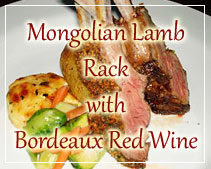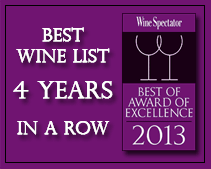Foie gras, the fattened liver of a waterfowl, namely a duck or a goose, is produced by a special feeding process.
As 1999 comes to a close and echoes of past festivities hint at the expectations for the coming century, few delicacies embody the quintessential spirit of the millennium as does foie gras. This penultimate luxury is typically associated with the decadent triumvirate of foie gras, truffles, and caviar. These days any self-respecting restaurant menu will offer some variation of a foie gras dish, from a perfectly delicate terrine slice to a succulently seared morsel with a plethora of fruit accompaniments. New Year’s Eve celebrants would not even dream of ringing in the New Year without a little foie gras.
Foie gras is almost always assumed to be a French product. After all, foie gras is the French word that means, “fattened liver.” During the Christmas holidays, French tables are laden with many delicacies, including terrines and cured foie gras. Gascony is the heartland of duck and goose foie gras production. For the French, foie gras is not just a familiar ingredient, but an intricate part of the historical and cultural heritage of the people.
Outside France, there exists a different story. While most people have heard of “paté”, few know what it is exactly, how it relates to foie gras, and what are the proper handling and preparation techniques. The intensive labor and time required to produce foie gras ensures that it maintains a romantic and exclusive reputation. As an expensive commodity, foie gras can be intimidating for the home cook. In truth, foie gras is one of the most fascinating, versatile and simple ingredients that can showcase a chef’s talent and enliven any amateur’s repertoire. Flip through my reference book, Foie Gras…A Passion, and you will discover some amazing facts as well as dazzling photographs of the possibilities that foie gras affords.
Foie gras, the fattened liver of a waterfowl, namely a duck or a goose, is produced by a special feeding process. Physiologically, ducks and geese possess an anatomy that allows their bodies to store excess fat in the liver naturally, in preparation for long winter flights from northern Europe to the Mediterranean, Middle Eastern and the Nile river basins. It was actually the Egyptians who recognized goose meat as a delicacy, particularly fattened geese, over 5000 years ago. In fact, ancient Egyptian hieroglyphics on the Tomb of Mereruka in Saqqara depict household scenes of servants force-feeding geese with grains. Two thousand years later, the Romans in trying to fatten geese for the prized flesh began to recognize the fattened liver as a delicacy in its own right. After the fall of the Roman Empire, the Ashkenazi Jews of Western and Central Europe preserved the art of making foie gras and eventually reintroduced it to Renaissance Europeans
Today, foie gras is produced in France, Hungary, Poland, Israel, Canada, and the United States. Most of the European and Israeli production provides for the consumption needs of France. Until recently, raw poultry importation restrictions prohibited the sale of European foie gras in the United States. In response, Hudson Valley Foie Gras was created to tap into the relatively unexplored American market of rising chef talent and consumer sophistication. With a production schedule exceeding 7000 livers per week, Hudson Valley foie gras is a recognizable presence on most menus.
Historically, foie gras was derived exclusively from fattened geese. Over the last fifteen years, however, most foie gras has been produced from ducks, moulard ducks specifically. Geese are more difficult to raise and are more susceptible to disease and stress. In either case, foie gras is a luxurious item. The liver is characterized by two lobes, putty beige in color, and slightly firm to the touch. Foie gras livers can weigh upwards of two pounds, with the average falling around a pound and a half. About 80 percent of a foie gras is comprised of fat, which makes it a very versatile product, suitable to a wide range of preparations, including grilling, searing, and roasting. The high fat content is frequently a cause of concern for eaters, but in truth, foie gras is such a luxurious item, you would have to consume an incredible amount, far more than you are likely to do, for it to have an adverse health effect.
Prior to cooking, foie gras needs minimal handling. Raw foie gras is vacuum-sealed in plastic bags. It needs to be rinsed briefly, then carefully deveined of the large veins that run through the center of each lobe. It can be marinated overnight in port, Sauternes, or any other sweet libation. Some chefs soak it in milk, claiming it helps to remove the blood. Cleaning foie gras is of particular concern when making a terrine, which is essentially paté and is named for the rectangular mold in which it is baked. Since the finished product depends on the pale, creamy color of the foie gras, any residual blood will discolor the terrine. The flavor will not be effected however, but aesthetically, the terrine will not be as pleasant.
Conversely, high-heat foie gras preparations, such as grilling, roasting, poaching, and searing, are not as effected aesthetically by less careful deveining since they result in foie gras that is richly browned on the outside, and lusciously molten on the inside. One of the simplest ways to enjoy the true magnificence of foie gras is to simply slice the liver into three-quarter inch slices, season it liberally with kosher salt and freshly ground black pepper, and sear the slices in a very hot, dry pan for 45 seconds on each side. It is that simple! The liver will be medium rare on the inside, caramelized on the outside, and heavenly all around.
The flavor of foie gras is quite sumptuous. It is at once velvety on the palate and with meaty overtones. Europeans have a longstanding tradition of enjoying a slice of terrine, chilled, with a garnish of salad and a glass of Sauternes or a similar sweet, bodied wine. In the United States, culinary preparations have always favored hot foie gras, accompanied by a symphony of garnishes from sweet stewed fruits to savory relishes. In any case, the cloying luxury of the liver demands an appropriate acidic balance and a complement of texture. The wine pairing of foie gras has also favored diversity and an awareness of dominant flavors. The philosophy of matching wines is “anything goes” which includes full-bodied cabernets, citrusy Champagnes, and aged sauvignon blancs. Occasionally, even a good beer or chilled sake could be appropriate.
One could say, discussing foie gras is my passion. However, there is only so much to be gained from reading. The best way to learn about foie gras is to eat it as often as possible. With New Year’s Eve fast approaching, and an attitude of new beginnings burgeoning, foie gras is the essential ingredient for any celebration. One of life’s spectacular indulgences, it is also accessible to everyone.
Are these articles useful for enhancing your wine and dine experience in the Philippines. Do they also help you with travel, leisure, vacation, dining out, nightlife and other leisure activities plans in Philippines? Yats Restaurant hopes to provide you with ample information so you can plan your trips to Pampanga Angeles City Clark Freeport Zone whether you are travelling from Manila or other Asian countries such as Hong Kong, Shanghai, Singapore, Malaysia or Korea.
Restaurant reservations in Philippines, planning of menu, selection of wine for dinner and booking a private function and event in Angeles City Clark Freeport Zone can all be handled. Yats Restaurant and Wine Bar has been regarded by many to be the premier restaurant north of Manila Philippines. Its 3000-line award-winning restaurant wine list has kept many wine lovers happy dining in this restaurant in Angeles City Clark Philippines for over a decade.
Yats Restaurant and Wine Bar was built by Hong Kong-based Yats International in 2000 to provide a world-class fine dining restaurant, business meeting facilities and venues for private dinners and functions in Pampanga Angeles City Clark Freeport Zone. Pampanga Angeles City Clark Philippines was selected for this restaurant because of safety, clean air, absence of traffic and proximity to Manila and Subic.
For comments, inquiries and reservations, email Restaurant@Yats-International.com or call these numbers:
(045) 599-5600 0922-870-5178 0917-520-4401 ask for Ernest or Pedro.
Http://www.YatsRestaurant.com
Foodies and wine lovers travel north from Manila to wine and dine at Philippines’ best fine dining restaurant in Pampanga Clark Freeport worth the 60-minutes drive for a memorable evening of good food with vintage wine at Yats Restaurant & Wine Bar. Frequent travelers laud Yats Restaurant as the best place to eat, drink and unwind after work or golf in Clark Pampanga.
Over the holidays, travelers from Manila going to the north for a getaway destination choose Pampanga Angeles City and Clark Philippines as a popular holiday location. Aside from day-time sports and other activities, visitors look for a good restaurant to wine and dine, some bringing their families with children along. Yats Restaurant is one of the most famous fine dining restaurants outside of Manila, located in Mimosa Leisure Estate inside Clark Airbase or Clark Freeport Zone as it is now called. This popular restaurant has become a tourist attraction, a place to visit for those who are in Pampanga, Subic, Angeles City and of course, Clark Philippines.
This fine dining restaurant in Clark Pampanga is also famous for its low carbohydrates “low carb” dishes highly recommended for frequent diners who are on a low fat food and favor healthy food. This is a unique restaurant that can help frequent diners maintain a healthy diet and enjoy delicious fine dining cuisine at the same time. Vegetarian dishes are a specialty here also and so are “halal” cuisines also.
In Clark Pampanga, favorites of frequent diners, foodies and wine lovers are steaks, Wagyu, Foie Gras, lobsters, venison, kangaroo loin, osso buco, veal chops, Kurabuto pork, escargots and a good selection of cheeses to enjoy with fine Vintage port and Sauternes. Cuban cigars such as Monte Cristo, Cohiba, Upmann, Partagas, Romeo Julieta and Trinidad are also available in the Magnum Room which is a wine bar and lounge for before and after dinner relaxation. A good selection of Armagnac, Cognac, Single Malt, Vodka and other liquor is served in addition to the wine vintage wines some served by the glass. This is one of the best place to drink, relax and unwind with friends in Angeles City, Clark Pampanga.
Recent opinion survey of frequent travelers heading north towards Subic and Clark Pampanga revealed that the number one most frequently visited fine dining restaurant in Pampanga is Yats Restaurant & Wine Bar located in Clark Philippines.
Inquiries and reservations
Restaurant@Yats-International.com
(045) 599-5600
0922-870-5178
0917-520-4401
Ask for Pedro and Kiko
Http://www.YatsRestaurant.com
Getting to this fine dining restaurant of Angeles City Clark Freeport Zone Pampanga Philippines
How to get to this fine-dining restaurant in Clark Philippines? Once you get to Clark Freeport, go straight until you hit Mimosa. After you enter Mimosa, stay on the left on Mimosa Drive, go past the Holiday Inn and Yats Restaurant (green top, independent 1-storey structure) is on your left. Just past the Yats Restaurant is the London Pub.
Yats Restaurant & Wine Bar
Mimosa Drive past Holiday Inn, Mimosa Leisure Estate,
Angeles City Clark Freeport Zone, Pampanga, Philippines 2023
Manila Sales Office
3003C East Tower, Phil Stock Exchange Center,
Exchange Rd Ortigas Metro Manila, Philippines 1605
(632) 637-5019 0917-520-4393 Rea or Chay
For assistance in hotel and resort booking in Clark, Philippines, log on to http://www.HotelClarkPhilippines.com
For assistance in locating a suitable venue for wedding reception, log on to
http://www.PhilippinesWeddingVenue.com









